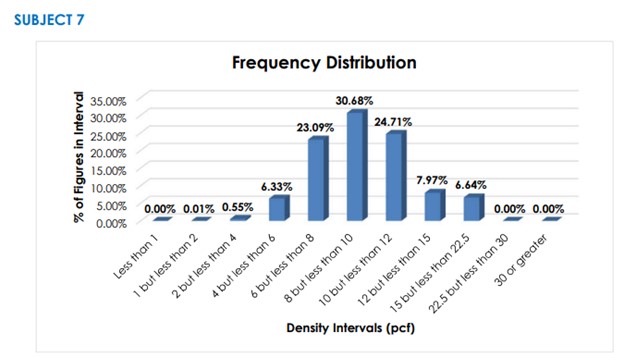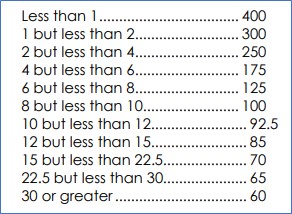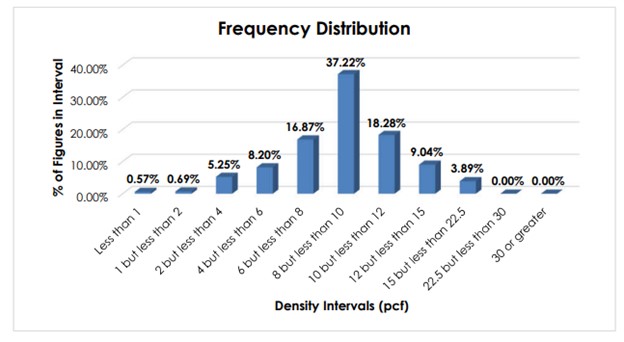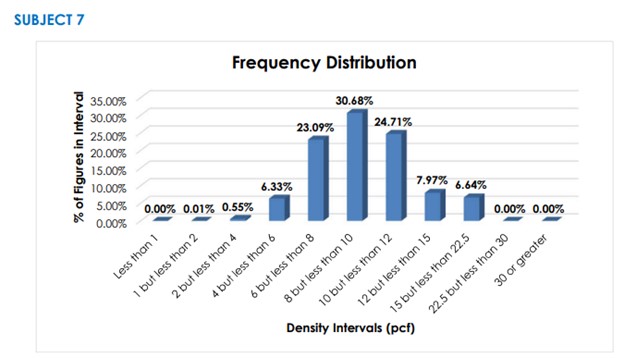-
21
Mar
Six Suggestions for the NMFC

The National Motor Freight Classification (NMFC) has been providing standardization to the LTL industry for over 80 years. Formed from a similar classification system developed for the railroad industry, the NMFC today is managed by the National Motor Freight Traffic Association (NMFTA) and its Freight Classification Development Council (FCDC).
Over time many changes have taken place with the NMFC and how it is maintained/updated. But I would argue that these changes have not kept up with the LTL industry, and today in many ways are holding back the industry. The NMFC plays many important roles, one being standardization. Thus, I am not advocating for the demise or replacement of the NMFC, but rather for more urgency and a greater willingness to change in order to bring about a higher form of standardization. I am proposing the following six bold changes:
1) Make dimensions part of the Bill of Lading requirements. At the least, make dimensions a suggestion. Do not be silent, as you are today.
Item 250100 of the NMFC outlines “Information to be shown on the Bill of Lading.” This information includes:- Name and address of shipper
- Name and address of consignee
- Commodity word descriptions (NMFC item-sub is a suggestion)
- Kind of packaging used
- Number of articles, packages, or pieces
- Applicable NMFC class
- Weight
Note that dimensions nor cube are NOT listed. Dimensions and cube are arguably the most important factor in determining LTL carrier cost and LTL shipper charges. Simply put, space matters. As shipment densities have declined over time, space matters more than weight. Carriers need this information to cost their freight, determine revenue, and optimize their operations. The sooner they have accurate dimensional data, the sooner they can address each of these important areas.
Shippers today cannot accurately classify and quote their LTL shipments without dimensions. Over 50% of LTL shipments today are classified based upon the standard 11-sub table shown below and as found in the FCDC’s policies and procedures.

Another 25% of LTL shipments are classified in some manner based upon density, such as item 76850 for freeze-dried or dehydrated food items below.

When most items moving in LTL today require density to determine the class, one must know the dimensions in order to know the density. Shippers cannot secure an accurate quote, one that will match the carrier invoice, unless they know their shipment dimensions. This lack of accurate dimensional data is one of the key factors behind carrier rebilling and classifications changes that are sand in the gears to an efficient LTL payment process. The NMFTA needs to move the industry forward towards providing this critically important information on the BOL.
2) Make the NMFC item-sub part of the Bill of Lading requirements. At the least, make the NMFC item-sub a stronger suggestion.
While we are updating the BOL requirements to include dimensions, let’s do likewise with the actual NMFC item-sub. Written descriptions of commodities tendered require a person to read said description in order to determine the proper NMFC item-sub. That was a fine 50 years ago, before computers were widely available, but absolutely does not lend itself to automation today. Carriers need Electronic BOLs with machine-readable and actionable data. NMFC item-sub provides such data. Sure, keep the written descriptions as back-up and for situations such as inspections where written notations are necessary. But move the NMFC forward with the times.Use of NMFC item-sub on the BOL increases the odds that this data will be utilized during the quotation process by the shipper. And if the shipper is using a TMS to compare density to NMFC item-sub, the TMS can warn the user when an apparent mis-match occurs. Think of a CL65 shipment with a density of 4 PCF, right?
FAKs are another key factor behind carrier rebilling and classification changes. Many shippers list class on the BOL, but the list the rated FAK class rather than the actual class of the commodity. Using the actual NMFC item-sub can reduce this common error and help both shipper and carrier, as a sharp TMS can spot the mis-match between the item-sub and the class.
3) Consider the future when making classification changes. Cease the focus on historical profile.
The FCDC relies heavily on historical shipment profile data when considering classification changes. For example, in Subject 3 the most recent Docket 2022-1, the FCDC proposed changing the classification of smoke and gas detectors from 4 different class ratings based upon value to CL110. The logic behind this proposed change was that historical data showed the average density of smoke and gas detectors was 8.95 PCF which was much more indicative of a CL110 rating than existing class ratings. Makes sense. I should note that the FCDC also pointed out that shipments of smoke and gas detectors pose no handling, stowability, or liability concerns.But what necessitated this change? Most likely the materials used to construct detectors have changed to lighter-weight plastics, and/or packaging changes have added more space than weight. We all know how what used to be made of metal is now made of plastic. And advances in plastics means less can be used while not sacrificing strength. Further, packaging is not just about protecting products but selling them too. Unfortunately, packaging made to promote items such as smoke detectors can compromise density. Smoke detectors, similar to many commodities sold in retail, are getting lighter and bulkier.So what happens 2-3 years from now if a similar density study determines that the average density of smoke and gas detectors has fallen from 8.95 PCF to 7.95 PCF? Well, we now have to change the class from 110 to 125. That full process take time and resources, and meanwhile the profile of the commodity does not match the classification.
So what if the FCDC considered potential changes in the future, particularly those like density where the other three considerations (handling, stowability, liability) are not a concern. What if the FCDC simply shifted such commodities like smoke and gas detectors to their standard 11-sub scale? If the density were to actually change in the future, the NMFC is now pre-loaded to handle that change. Think of the time and resources that can be saved, and the speed with which the NMFC can adjust to the market. It now self-adjusts!
That leads us to the next point…
4) Rapidly move ALL commodities with negligible stowing, handling, and liability considerations to the standard 11-sub density scale.
Let’s stick with this recent example of smoke and gas detectors. The density study utilized by the FCDC found the following density profile:
Clearly, the average density is in the 8 – 10 PCF band. But note that the majority (63%) of the observations fall outside that band. So the FCDC effected a change that applies a single class to a commodity, and this single class will align with a MINORITY of the observations!
Note further that the observations on the upper and lower ends are fairly balanced, with measurable observations confirming to classifications from CL65 to CL250. Why is this? Because some detectors may still be made of dense metals. And conversely, some detectors are made with lighter profiles of plastic, or are packaged in a manner where density is significantly compromised. Bottom line, the density profile of smoke and gas detectors is fairly wide-ranging and is dynamic. If you perform a similar density study on detectors a year from now, you will get a different profile. The density profile is dynamic, but the classification static.
Here is another concern. A static class limits the incentive for the shipper to package detectors efficiently so as to secure a lower class via a higher density. If detectors are always CL110, regardless of packaging, why be concerned with wasteful packaging? Further, over 30% of the observations have a density of 10 PCF and above. Should not those shippers benefit from a lower class?
To be fair, the FCDC appears to be moving in the right direction. But with 3 updates per year, and a deliberate process involving detailed density analyses, the process is moving too slowly. And they continue to miss opportunities. In in Subject 7 of the most recent Docket 2022-1, the FCDC determined that Cough Drops have the following density profile:

But instead of moving Cough Drops to a Full-Scale 11-sub density classification, they simply bumped the class from CL65 to CL100. In a few years, they may study Cough Drops again and make another change. Wouldn’t it be better to take a page from the Ronco Rotisserie BBBQ? Set It and Forget It!
5) Consider an alternative profile-based NMFC.
In lieu of super-charging the existing classification process, maybe a more-logical solution is to develop an alternate to the existing NMFC. A 2nd version, if you will, that customers can choose to utilize. This alternate version would follow the “cardboard boxes on a pallet” principle that any commodity which is shipped in cardboard pallets and stacked on pallets should be rated exclusively by density.As noted above, the current NMFC already classifies at least 75% of all commodities shipped LTL based upon density. So for starters, just bundle all of those items under one super-item, and use the 11-sub class scale for classification. Then, run through the rest of the NMF items remaining and determine which have significant handling, stowing, or liability factors. Leave them as is and move the remaining to this super-item. You could even address those items with non-density considerations by creating profile rules, such as a 1-class bump for items over 8 feet long and a 2-class bump for hazardous materials.
Further, many LTL carriers have made changes in their rules tariff where shipper description errors can allow them to classify shipments with the standard 11-sub class scale. So even more shipments these days are not just getting classified by density, but classified using a standardized scale. The NMFC should just push the entire industry completely in this direction.
6) Make the NMFC more readily available to shippers.
LTL carriers use the NMFC heavily, every day. Many of their employees make use of the browser-based ClassIT product, an on-line version of the NMFC publication. And several carriers incorporate the NMFC data directly into their rating programs. The NMFC data is available in both forms via paid annual subscription.But on the shipper side, use of the NMFC is very limited. Most shippers do not subscribe to ClassIT, or to the NMFC data files. Why? Two reasons. First, shippers will only have frequent need. The items they ship may not change much over time. Once they update their product database with the correct NMF item-sub pairs, they may not need access for quite some time. Second, the $375 annual cost of a subscription is too high relative to their need. The NMFTA does not offer a differentiated pricing platform to recognize these two very different users. Maybe it is time to provide shippers with a subscription price that makes sense. Maybe like several magazines I have subscribed to, free usage for a limited time would make sense.
Make the rules items available to the public, like most LTL carriers do with their rules tariffs. I noted above that Item 250100 lists the requirements for what shippers should put on the Bill of Lading. But how are shippers supposed to know these rules if they cannot readily see the rules? Many of these NMFC rules are described as industry best practices. But how can the industry be mindful of these best practices if they cannot readily be seen?
Shippers largely get news and updates on NMFC changes from their LTL carriers and logistics service providers. But how do these providers notify every shipper out there? So here’s an idea. How about the NMFTA build a notification system where a shipper can supply an email address and the NMF items they ship. Then, when the NMFC makes any change to any of those NMF items, the shipper can be notified.
The NMFTA and its NMFC guidebook provide immense benefit to the LTL industry. But there is more this organization can do. Opportunities to further advance and evolve the industry are at hand. Opportunities to increase transparency and visibility and efficiency while reducing friction and waste and cost. The NMFTA is in a unique and powerful position to make these advancements happen. Let’s go!
- (479) 461-1672
- Contact Us
